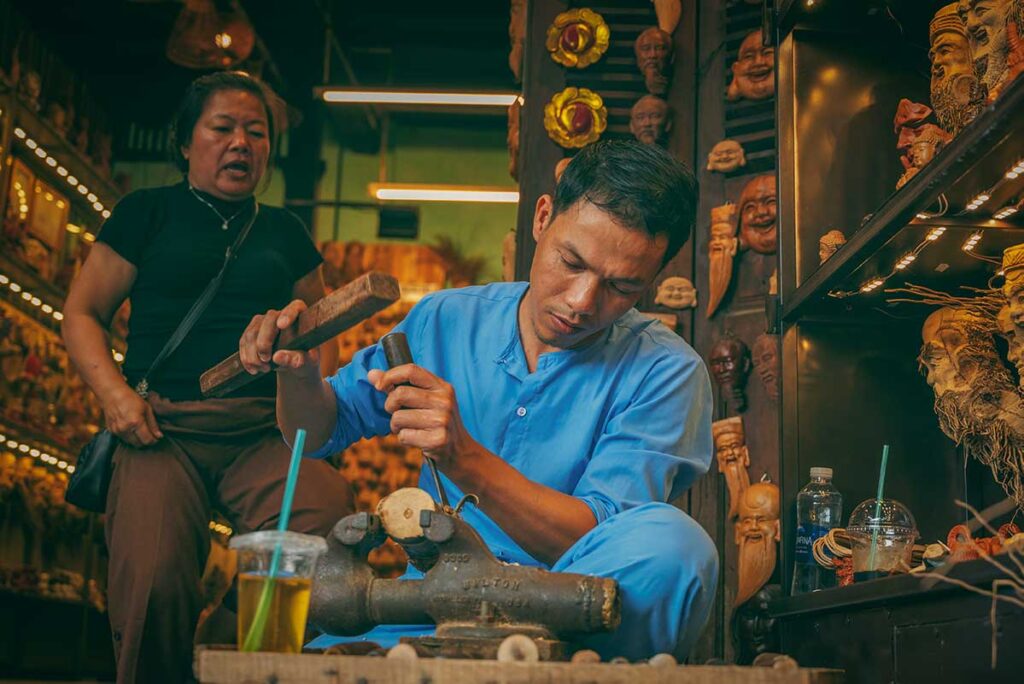History of Hoi An’s villages
Hoi An was one of Southeast Asia’s most important trading ports from the 15th to 19th centuries, connecting merchants from China, Japan, India, and Europe. This trade boom didn’t just shape the Old Town—it also brought prosperity to the surrounding villages along the Thu Bon River.
Skilled artisans and craftsmen settled here to supply the port with high-demand goods like silk, ceramics, bronze, and wooden carvings, many of which were exported or used to construct Hoi An’s iconic temples, assembly halls, and merchant houses. These villages became vital to the region’s economic and cultural development, and remarkably, several still continue their crafts today—though many now welcome visitors as part of local tourism.
Is it worth visiting these villages?
Today, many of these traditional villages have opened their doors to tourism. Some parts may feel a bit commercial or curated, but it’s important to remember that these were real working villages long before travelers started arriving. As demand for handcrafted goods declined and factories took over, turning to tourism became a way for artisans to keep their traditions alive.
What makes these villages worth visiting is the chance to experience something hands-on and personal. You can try your hand at wood carving, make your own pottery, ride a basket boat, or help on a herb farm—something completely different from walking around Hoi An’s ancient buildings.
Each village offers a unique experience: from historical craft villages like Kim Bong and Thanh Ha to more eco- and community-based places like Tra Que and Cam Thanh. The next sections cover the most interesting ones to explore.
Craft villages around Hoi An
These villages are the foundation of Hoi An’s artisan legacy. Located along the Thu Bon River and surrounding countryside, they each contributed to the town’s rise as a trading port centuries ago. While some now lean toward tourism, they still preserve important craft techniques passed down for generations. Many are easy to visit in a half-day trip from Hoi An.
1. Kim Bong Carpentry Village

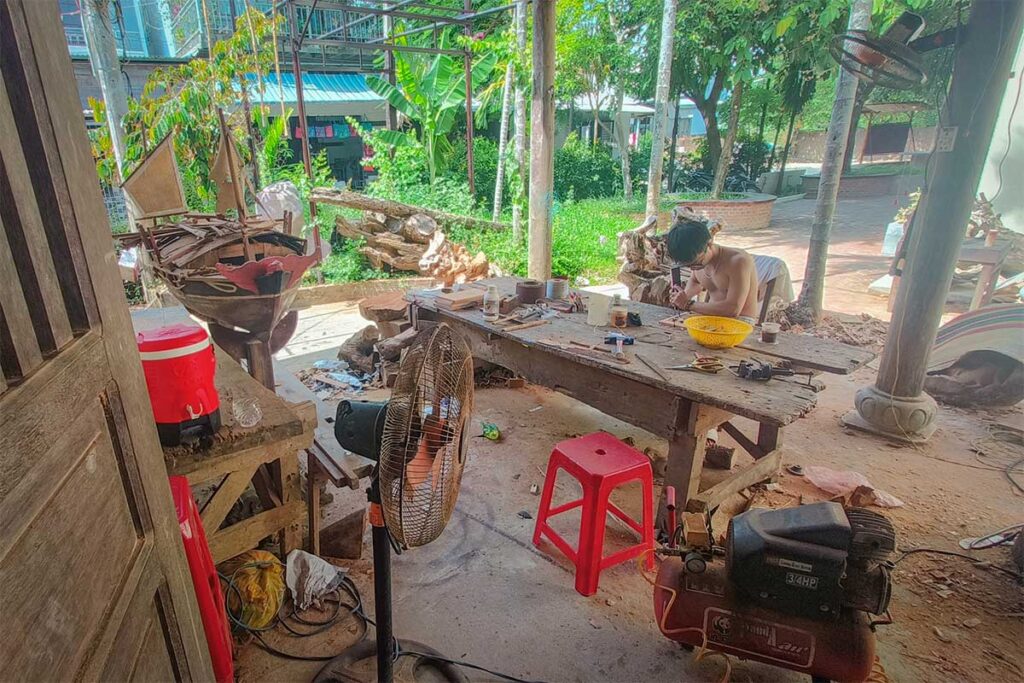
Located just across the river from the Ancient Town, Kim Bong is Hoi An’s oldest craft village, known for its wood carving and carpentry. Artisans here helped build the town’s historic houses, temples, and the famous Japanese Bridge. You can visit open workshops to see chisels in action or try your hand at carving a simple piece of your own.
Read more about Kim Bong Carpentry Village
2. Thanh Ha Pottery Village
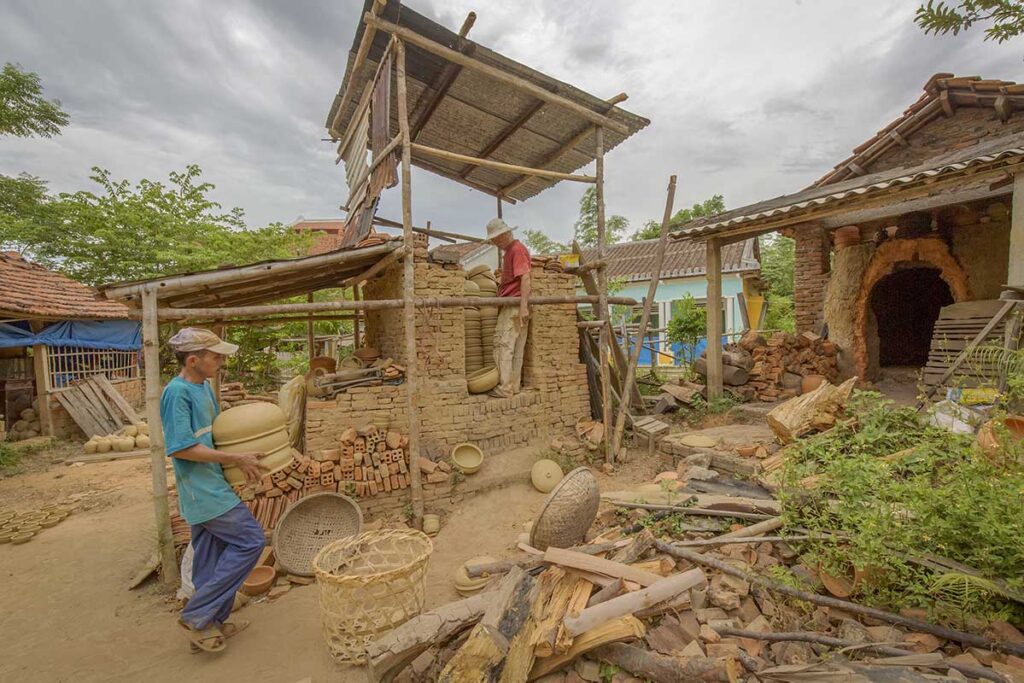
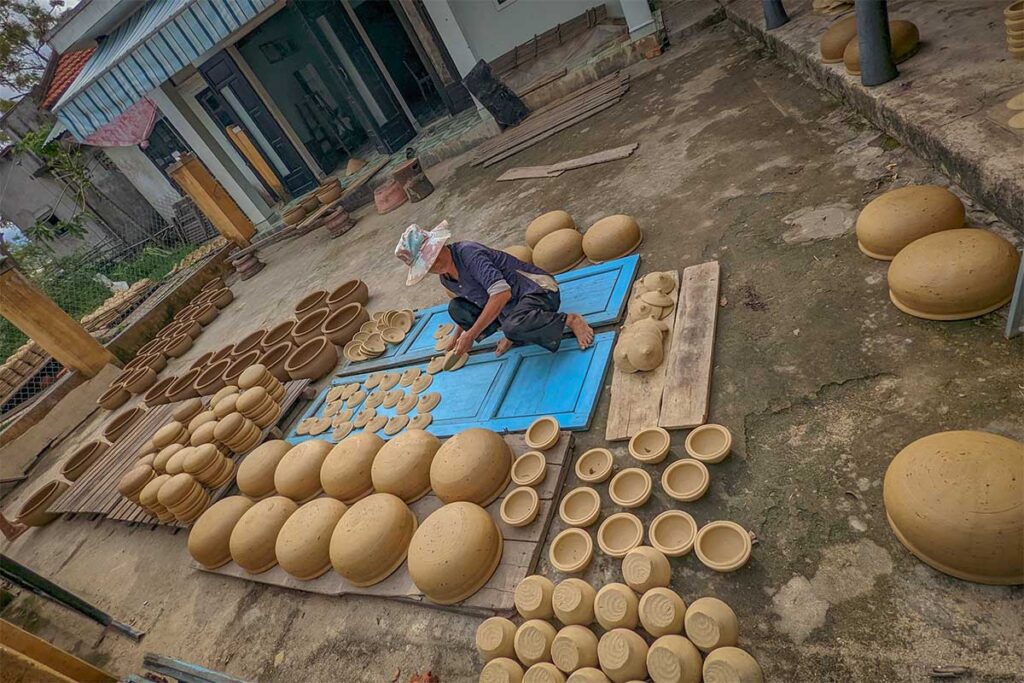
This riverside village has been making clay pottery for over 500 years. You’ll see families shaping bowls, pots, and vases using traditional techniques. A small ticket gets you access to the village and the impressive Thanh Ha Terracotta Park, where you’ll find scaled models of world landmarks and pottery exhibits. You can also sit down and try wheel-throwing with a local potter.
Read more about Thanh Ha Pottery Village
Pro tip: If you’re visiting early in the morning, make a quick stop at the nearby Thanh Ha Fish Market. This small but lively market is where local fishermen sell their catch directly from their boats—no frills, just real daily life. Best around sunrise.
3. Phuoc Kieu Bronze Casting Village
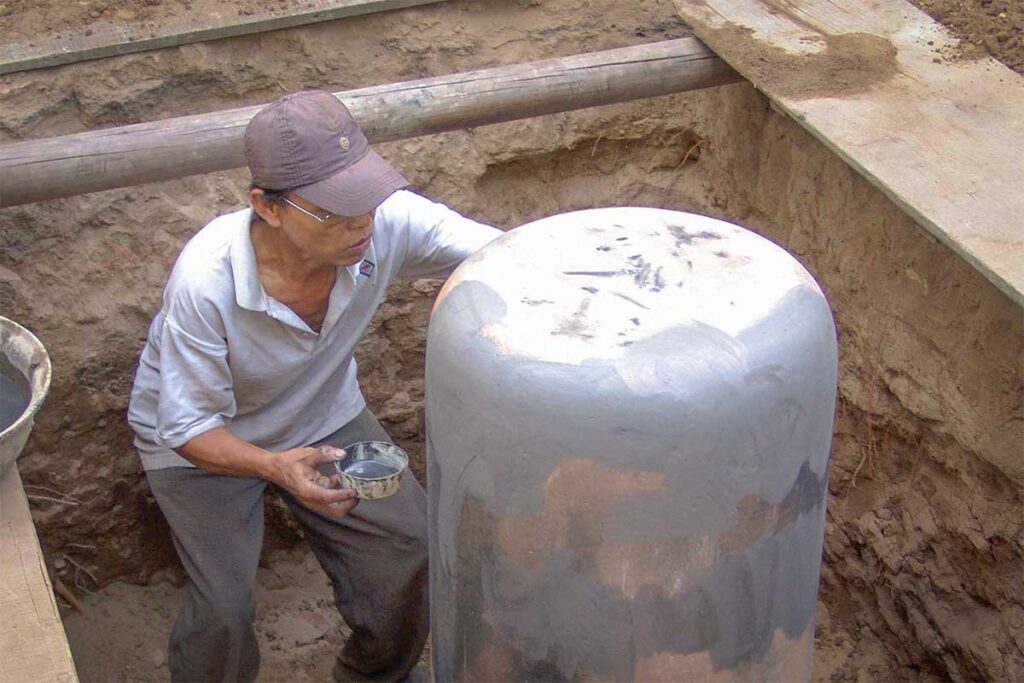
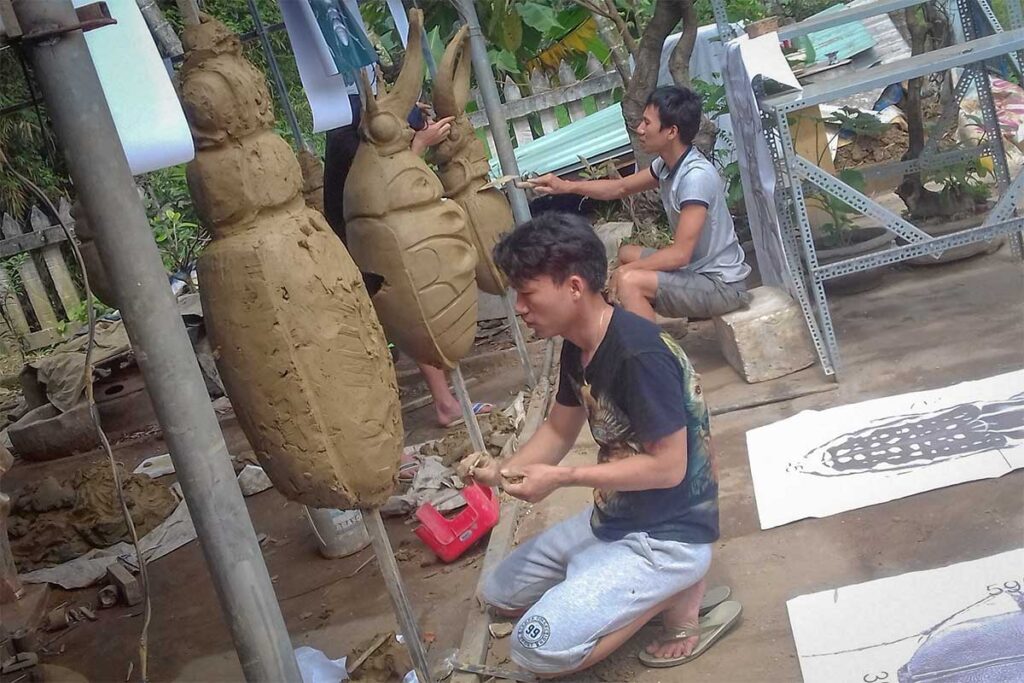
About 10 km from Hoi An, Phuoc Kieu has specialized in bronze work since the 1600s. It’s best known for making gongs, ceremonial bells, and decor used in temples across Vietnam. Several family-run forges still operate today, and you might catch the casting process in action. Some workshops offer short demos or let you strike the gongs to hear their sound.
Read more about Phuoc Kieu Bronze Casting Village
4. Ma Chau Silk Village
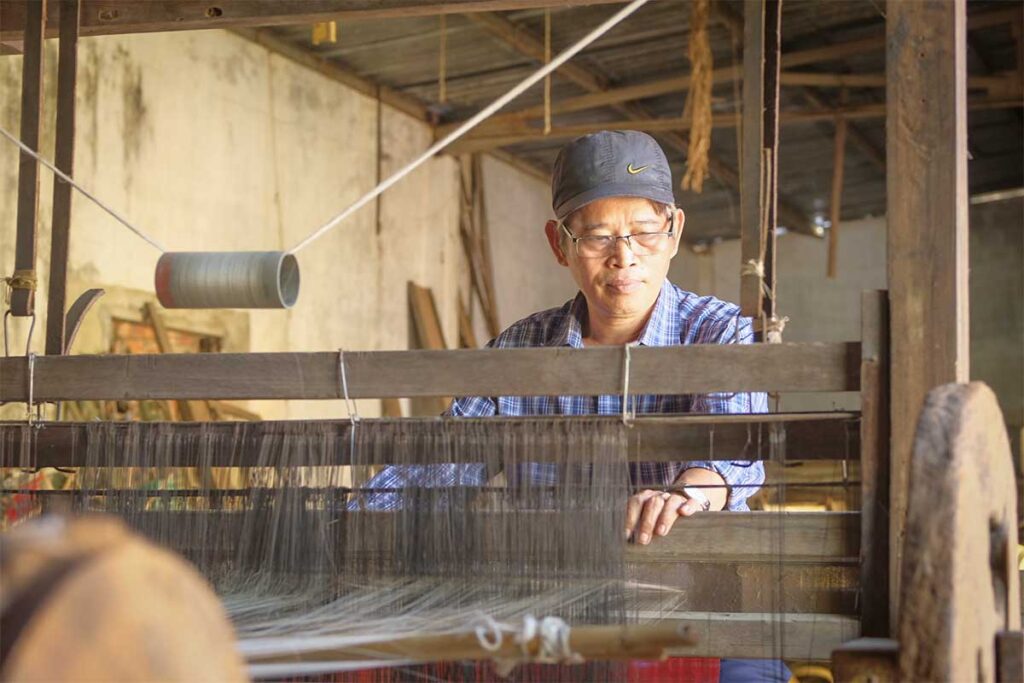
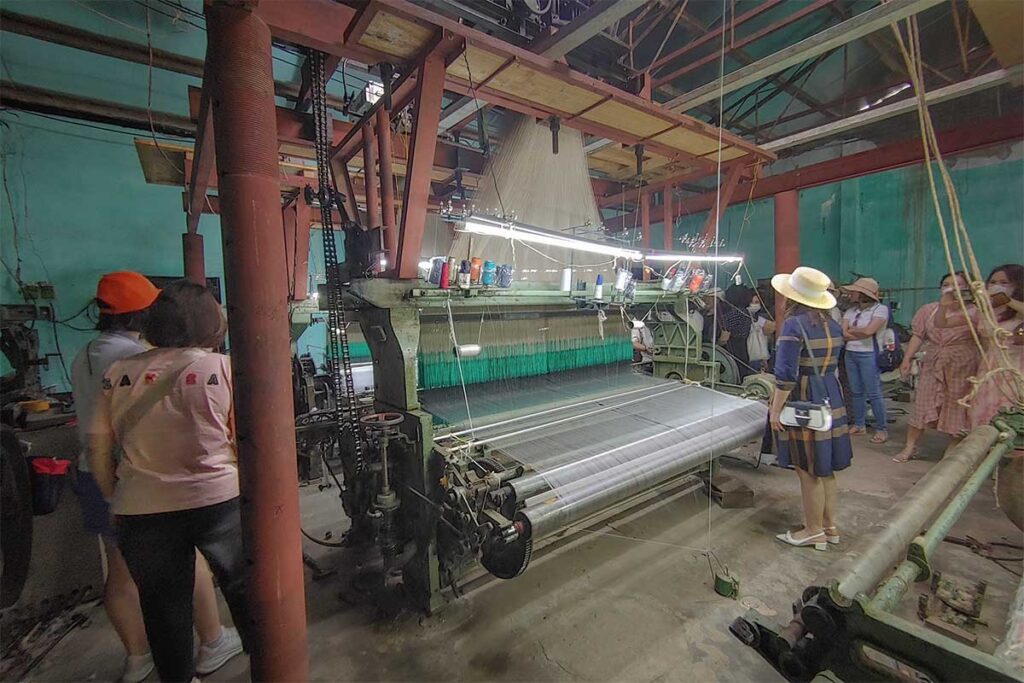
South of Hoi An, this quiet village once produced silk that traveled the Maritime Silk Route. Families raised silkworms, harvested cocoons, and wove fabric by hand. It’s not as touristy as Hoi An Silk Village, but with a local guide you can still learn about the silk-making process and its historical role in the region.
Eco & Local experience villages around Hoi An
Unlike the traditional craft villages rooted in centuries-old artisan skills, these villages focus more on eco-tourism and local living experiences. You won’t find grand temples or historical landmarks here—but you will get a closer look at countryside life. Think vegetable gardens, basket boats, mat weaving, and the kind of hands-on activities that are fun for couples, families, and anyone wanting something different from Hoi An’s Old Town.
5. Tra Que Vegetable Village
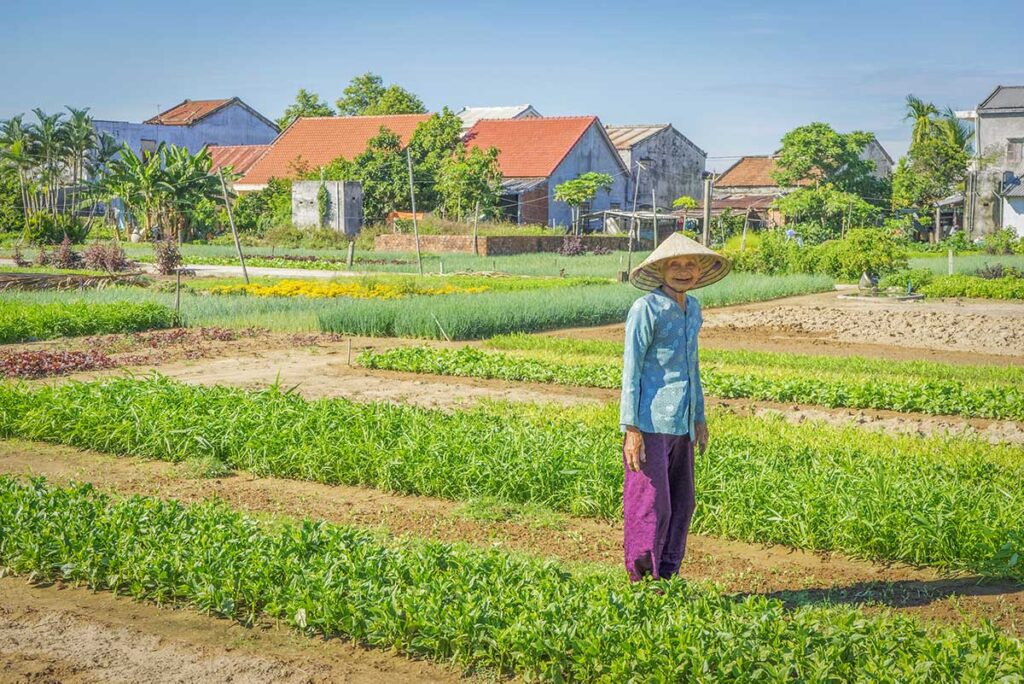
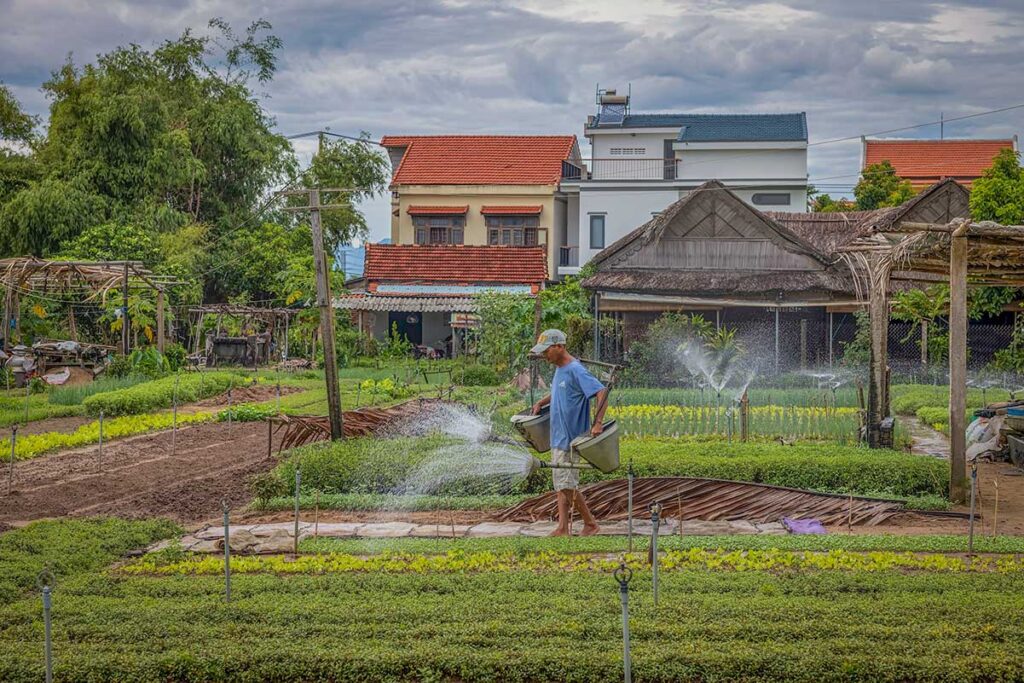
Located between Hoi An town and An Bang Beach, Tra Que is a small village known for organic herbs and vegetables grown without chemicals. You can join a short farming tour—pulling weeds, fertilizing with seaweed, watering with traditional cans—or book a cooking class using freshly harvested ingredients. Some places also offer herbal foot baths, and it’s all set in peaceful green surroundings.
Want to dive deeper into organic farming and cooking in the countryside? Read our complete guide to Tra Que Vegetable Village for a breakdown of all the hands-on experiences.
6. Cam Thanh Coconut Village (Bay Mau)
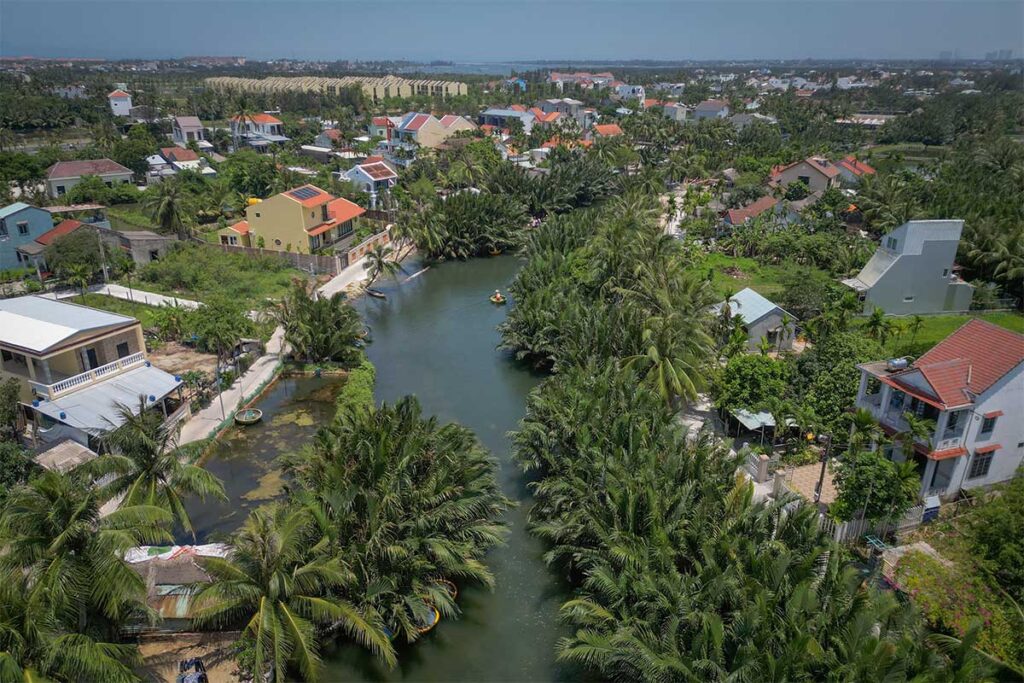

Technically not a village in the traditional sense, Cam Thanh is an area of dense nipa palm forest where the river meets the sea. It’s famous for basket boat rides through the waterways, usually including fun activities like net casting and coconut leaf folding. You’ll also find plenty of tour operators offering cooking classes and lunch by the river. Yes, it’s touristy—but it’s fun and easy to fit into your trip.
Curious about the basket boat rides? Check our full guide to Basket Coconut Boat Tours to learn what they are, what to expect, and typical prices.
Hoi An Countryside: Basket Boat Tour & Cycling
- Experience: Cycle through rice fields and villages, then glide in a traditional basket boat.
- Includes: Quality bikes, local guide, and a short river trip through Cam Thanh’s coconut forest.
7. Tra Nhieu Fishing Village
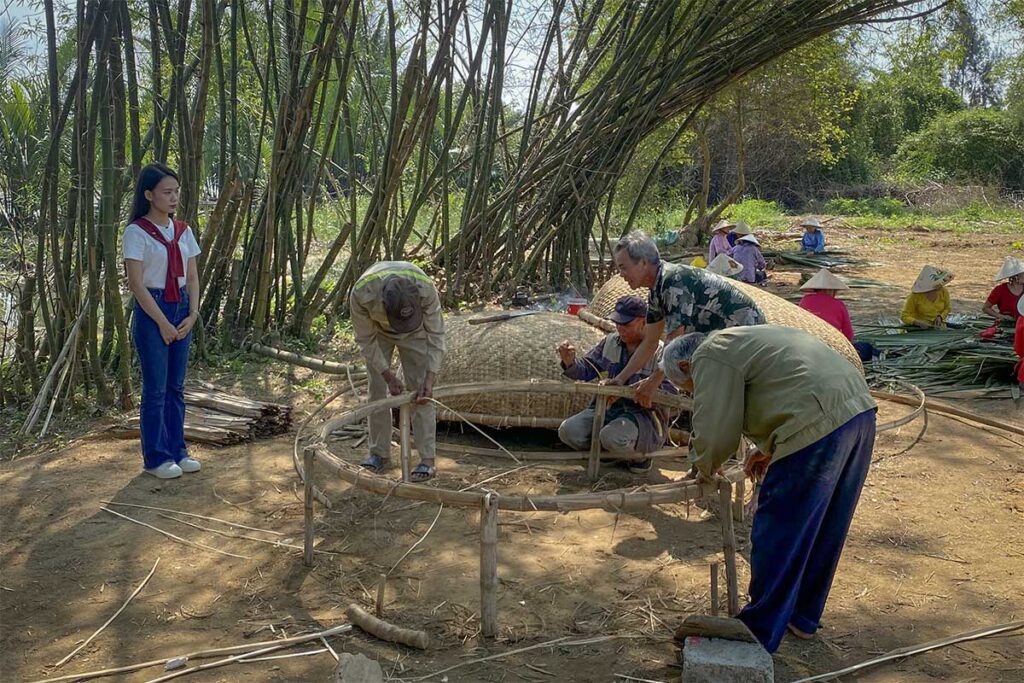
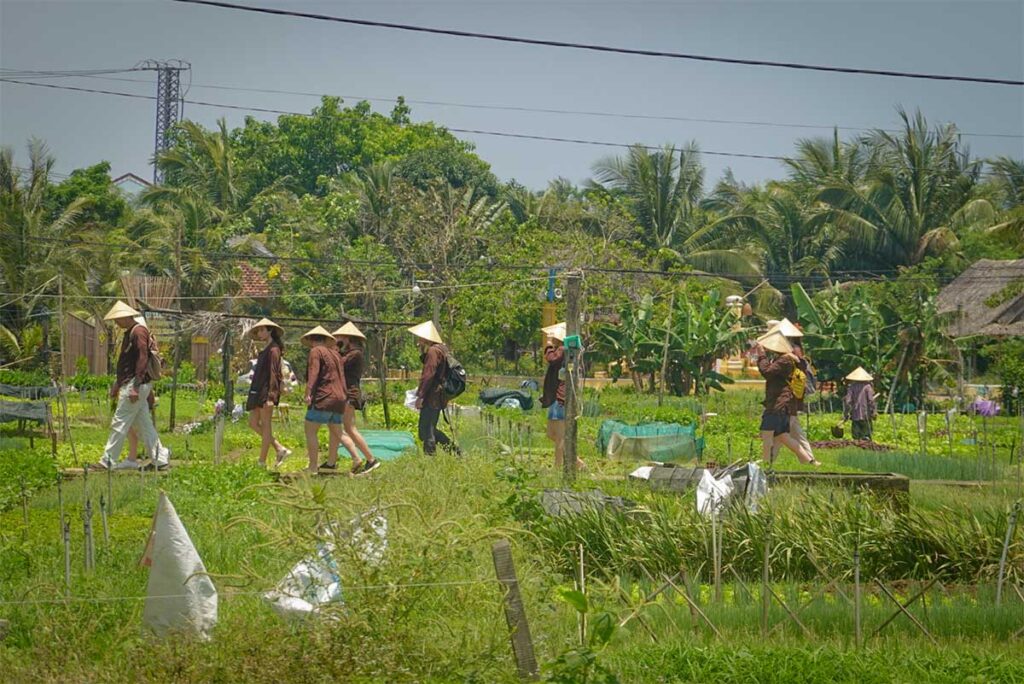
Tra Nhieu sits across the Thu Bon River from Hoi An and offers a mix of authentic village life and hands-on eco experiences. You can try casting fishing nets, learn how to row a round boat, or take part in a cooking session. What makes Tra Nhieu unique is its combination of activities: it’s also a sedge mat weaving village, where some families still make traditional mats by hand—two mats per day, woven on wooden looms. Expect friendly hosts, homegrown coconut juice, and a relaxed atmosphere with gardens and river views.
8. Triem Tay Village
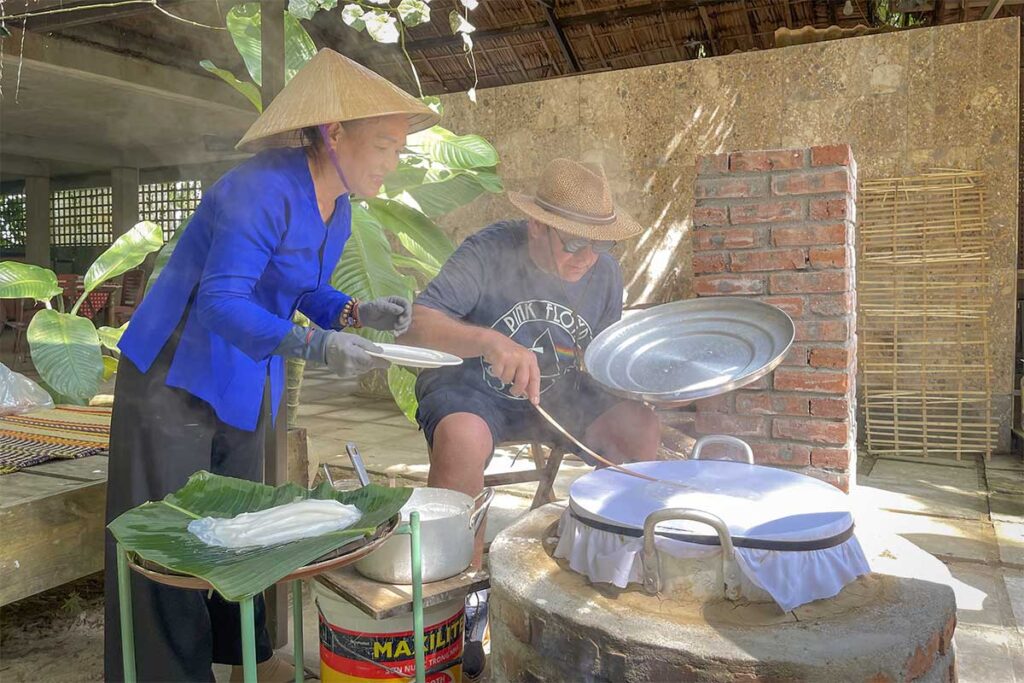
Just a short hop west of Hoi An, Triem Tay is a quiet farming village wrapped by the Thu Bon River. It hasn’t seen much tourist development, but a small eco-tourism initiative offers walking paths, garden house stays, and simple meals cooked with local produce. Some parts of the village are involved in mat weaving, and you may spot bamboo being grown for local use. Think of it as a peaceful alternative to Tra Que—fewer visitors, more space, and a slower rhythm.
